The Rijksmuseum, meaning “state museum” in English, is the most visited museum in the Netherlands and for good reason. There’s a lot to see and admire. This article will take you through some of the highlights of the Rijksmuseum’s artwork and show you how you can book tickets and skip the line!
If you’d like to go straight to finding Rijksmuseum tickets click here.
Table of Contents
Intro: Rijksmuseum
The museum, which was originally built in 1885 and recently underwent a €375 million renovation, hosts Rembrandt’s most famous works along with the works of several other famous artists, such as Johannes Vermeer and Van Gogh.
The thousands of art pieces are brilliantly displayed throughout this immaculate museum and visitors will often find the rooms and corridors housing these timeless art pieces to be equally as impressive as the pieces themselves.
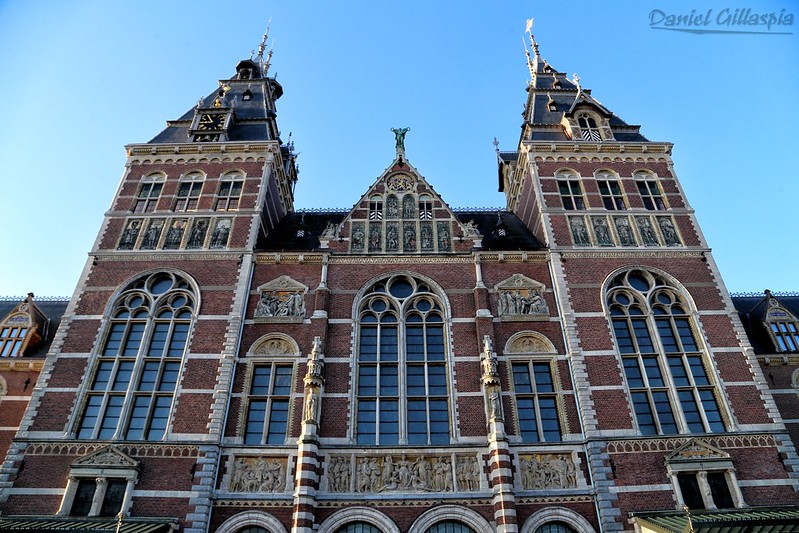
The Museum’s exterior
The first thing that will impress you upon arriving is the exterior of the museum.
On the outside you’ll find a combination of Gothic and Renaissance architecture along with an artful mix of bricks and sculptures which pay homage to the greats.
Once you’re inside, the decor gets a little bit modern with state of the art lighting and beautiful glass ceilings that cast natural white lighting throughout the lobby area.
While the recent renovations that were completed in 2013 took a whopping 5 years longer (10 years total) than expected to complete, suffice to say, those renovations were quite worth the effort and the wait.
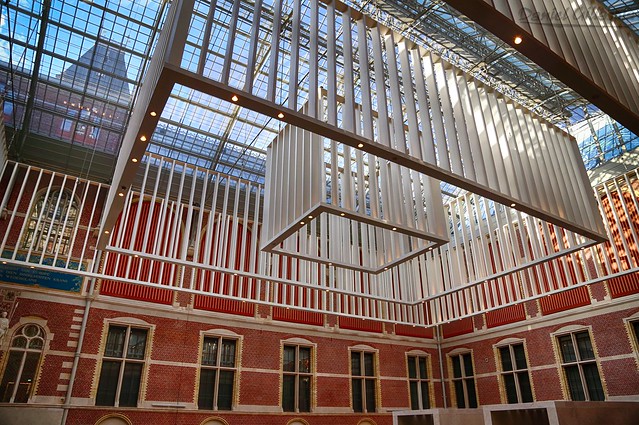
Go early… and bring your camera!
We arrived about 5 minutes before 9am, the time that the museum opens.
I highly recommend you arriving at opening time because there will only be a couple of handfuls of people in the museum for the first 30 minutes.
Also, after we had been in the museum for a couple of hours (around 11am), the crowds were picking up pretty heavily and I was told that it only gets worse until about 3-4pm. So again, if you want to experience the museum without battling the crowds do your best to line up at opening time.
If you plan on visiting you should probably book your tickets online.
You won’t save any dinero but it will allow you to bypass the cashier desk line and so you’ll be able to save a few minutes. One adult ticket is €17.50. And don’t forget to bring your camera, as the the Rjkmuseum is one of the few museums that allows cameras!
The amazing presentation of the Night Watch
I always take advantage of arriving early and head straight to the premiere exhibits to see them before the crowds begin to gather. In this case, it was clear that it would be Rembrandt’s Night Watch.
The quickest route to the Night Watch is through the doors on the right side of the entrance area (if you are facing the “Iamsterdam” sign).
From that entrance you head through a couple of galleries towards the stairs and you pop out right next to the painting. (The museum is arranged by centuries on different levels and the maps are great so you should be able to find your way around relatively easy).
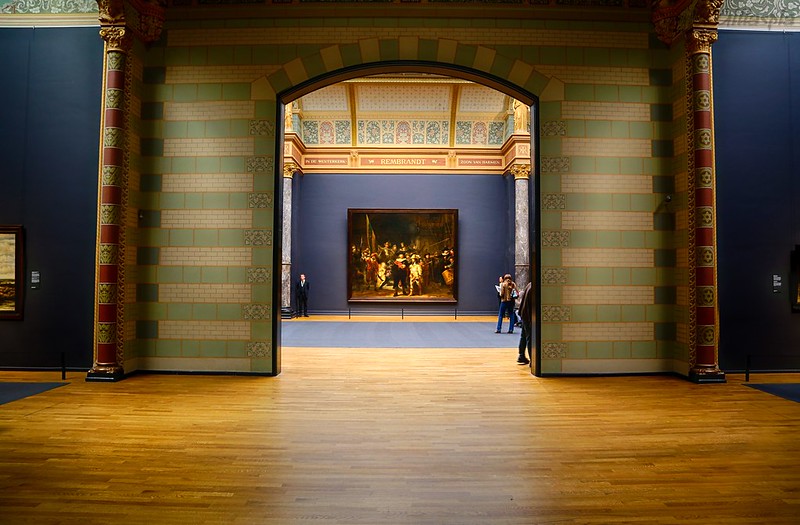
The entire presentation of the Night Watch was brilliant.
I thought they did a superb job of centering the painting in a huge room with other large works and completed it with a beautiful Rembrandt Moniker across the top.
My one complaint with the Mona Lisa at the Louvre in Paris was that the presentation was a bit mediocore, and I think the Rijksmuseum did a more-than-sufficient job of paying tribute to this famous artist.
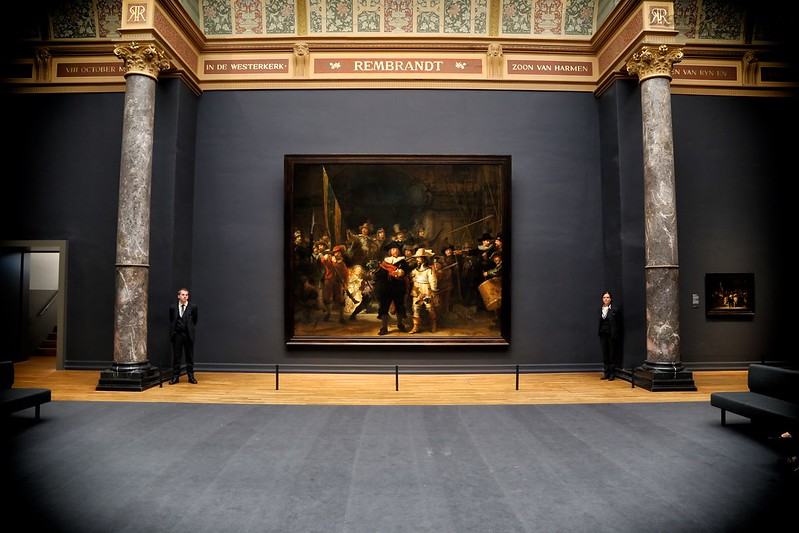
The real name of the Night Watch?
For any reader not aware, “Rembrandt Harmenszoon van Rijnis” is the most famous Dutch painter of all time and one of the greatest painters (and printmakers) to ever walk the face of the earth.
The Night Watch is Rembrandt’s most famous work of art and is consistently ranked as one of the top 10 most famous paintings in the world. It depicts a captain (in black) telling his lieutenant to get the troops moving as they move into formation.
For the purists out there, the real name of the painting is Militia Company of District II under the Command of Captain Frans Banninck Cocq or The Shooting Company of Frans Banning Cocq and Willem van Ruytenburch.
The name “Night Watch” was erroneously attributed to the painting because it looked as though Rembrandt was depicting a night scene due to his heavy use of shadows and the presence of a dark varnish on the painting (that varnish has since been removed).
Because it’s a shorter name and it is how everyone refers to it, I’ll just stick with: Night Watch.

Why is the Night Watch famous?
The painting is famous because it’s huge, it showcases Rembrandt’s profound skill for using light and shadows, and also because it was one of the first paintings of its kind to portray an “action scene” with multiple subjects essentially caught in a snapshot.
It’s interesting that a portion of this large work was in effect cropped when it originally appeared at the Amsterdam Town Hall.
Luckily, there’s a small re-creation of the painting to the right so you can see what aspect was cut off the canvas.
The painting has also endured some other “croppings” as a few individuals had the audacity to slash the painting with knives and one individual even threw out acid on the painting. Clearly, these were some very disturbed humans but the good news is that you really can’t even tell that the painting has undergone such damage.
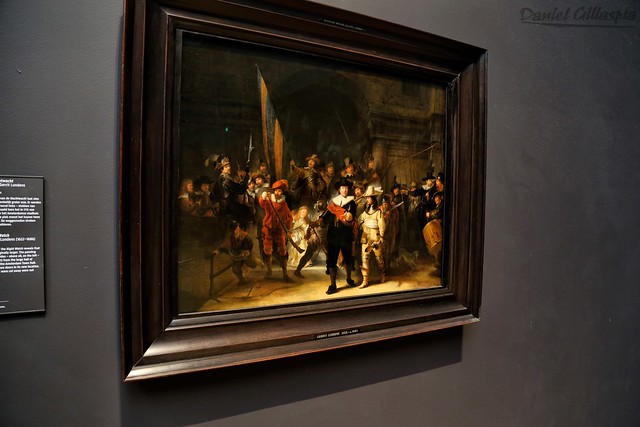
After Rembrandt finished this painting, his popularity began to dip significantly (most art historians attribute this to a change in artistic taste by the masses).
In fact, Rembrandt’s later life was actually pretty sad as he went bankrupt and lost pretty much everyone he cared about including his wife, later mistress, and his only son.
While the National Gallery has several of his works, there are many other Rembrandt pieces of art to admire at the Rijksmuseum. In an effort to not spoil everything for readers, I’ve only included a small fraction of the photos I took at the museum.
Below are a couple of my other favorite Rembrandt pieces I came across.
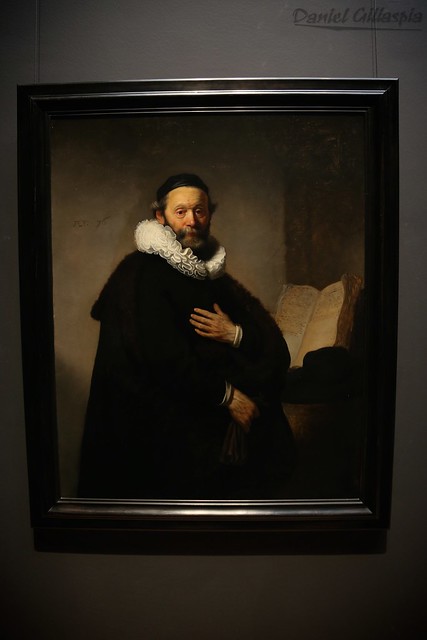
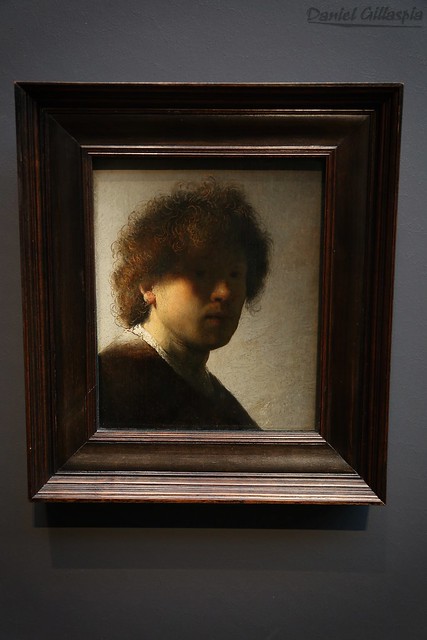
After taking a close look at several of these paintings, I really was able to finally comprehend the level of mastery that Rembrandt had of manipulating light and shadows.
I later learned that this technique of using light and shade to produce such stunning effects is called “chiaroscuro” and was pioneered by Leonardo da Vinci and later perfected by Rembrandt. It’s pretty phenomenal and is something that is hard to appreciate by just looking at photos of his works.
I tried to capture this element of Rembrandt’s paintings in my photos but it’s just not the same.
I think you actually need to be there standing only a few feet away from these paintings to actually comprehend how legendary of an artist Rembrandt was. And once you finally do get so close, it’s almost impossible to deny Rembrandt’s legacy.
The “Gallery of Honour”
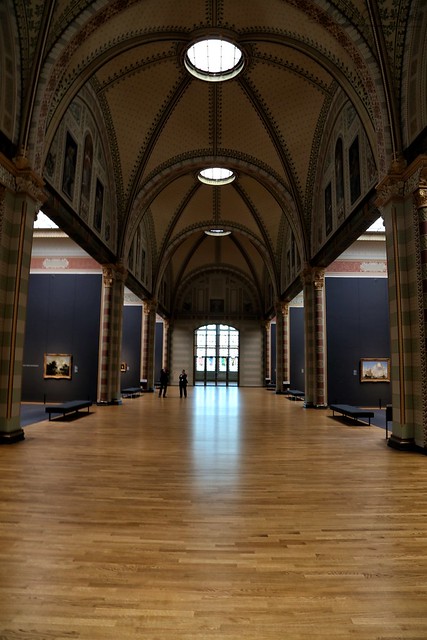
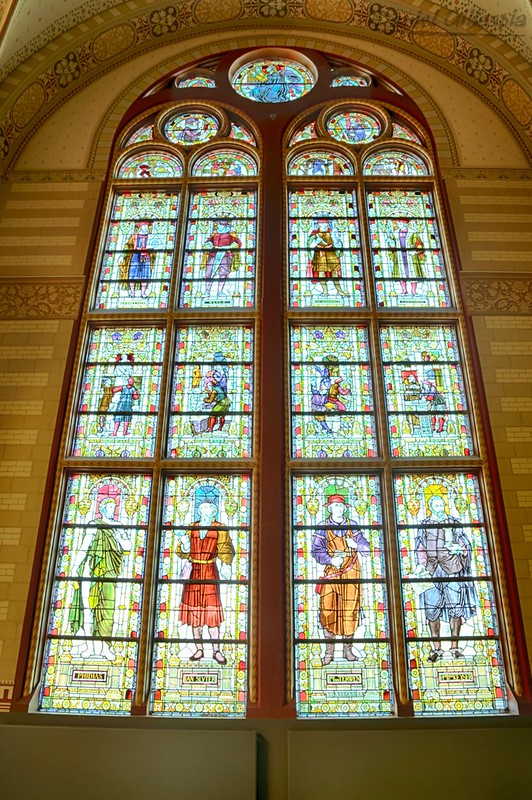
After viewing the Night Watch and other Rembrandt works we wandered through the “Gallery of Honour.”
This is a grand corridor where many of the other famous paintings from renowned artists of the 17th century are hung in the alcoves. Apart from Rembrandt’s work, Johannes Vermeer’s work is the most renown that you’ll find.
Vermeer’s work was largely unknown and even attributed to other artists up until sometime in the late 1800s.
His work focuses on everyday scenes with women usually serving as the subject. Personally, I’m not sure the biggest fan of his work but his painting The Milkmaid, is one of the most famous paintings in the world and that’s intriguing in its own right and worth your time.
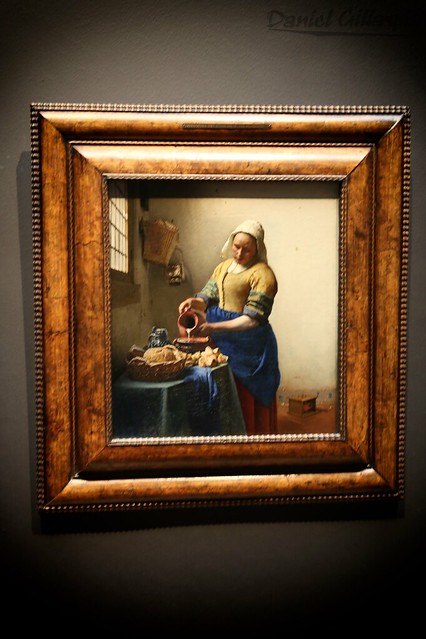
Apart from the two stars of the museum, there are of course a number of other exceptional paintings to check out. Again, as tempting as it is for me to go on a posting spree of these paintings, I’m just adding a couple of them here to give you a taste of you’ll come across at the museum.
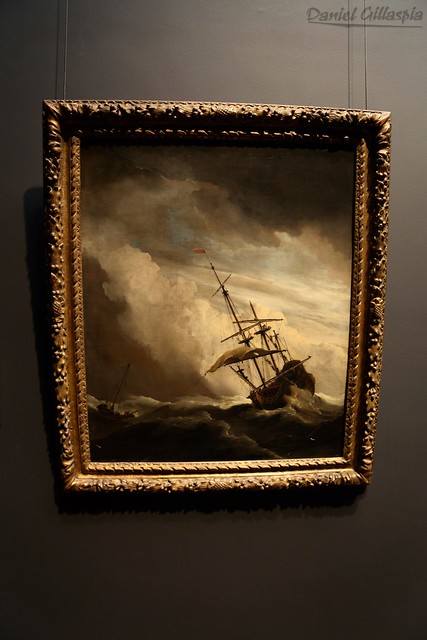
At the Rijksmuseum you’ll also find a lot of Biblical scene paintings.
Rembrandt painted many himself, though the ones that caught my eye were not by Rembrandt. The painting below depicts Adam and Eve and what was fascinating to me was noticing some of the background details.
For example, the animals at the bottom and the white cloud man in the bottom left who is actually supposed to be God warning Adam and Eve about the fruits in the Garden of Eden.
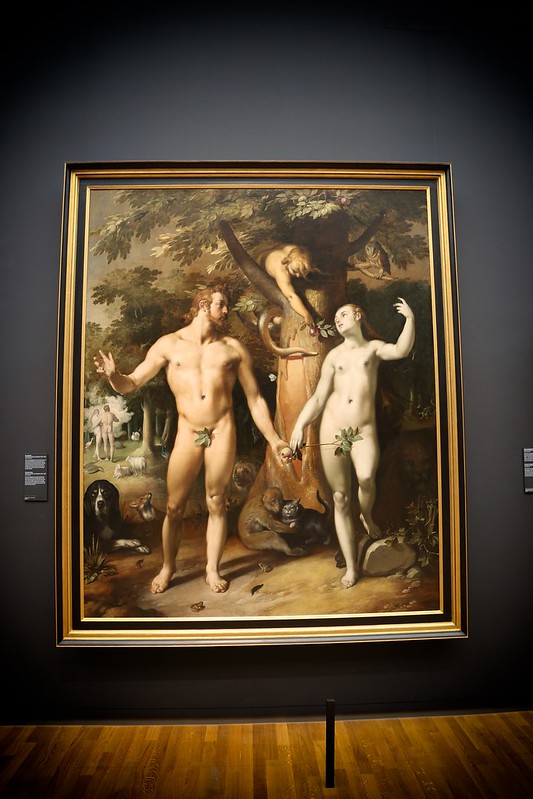
Another painting that grabbed my attention was Lot and his Daughters by Hendrick Goltzius, 1616, a painting relating to the story of Sodom and Gomorrah. What I thought was most interesting was that this particular artist was a skilled painter despite having a deformed drawing hand. It’s amazing to me what humans are capable of despite what others would view as great hindrances.
Some of the other paintings that struck me were the still life paintings.
You don’t typically think of looking at painting of cheese and grapes to be engaging but the detail and realism in many of the still-life paintings was pretty phenomenal.
The other thing that was interesting was finding out what the messages were behind these paintings. I was pretty amazed (and usually completely wrong) at what some of these paintings were meant to depict, but hey that’s art, right?
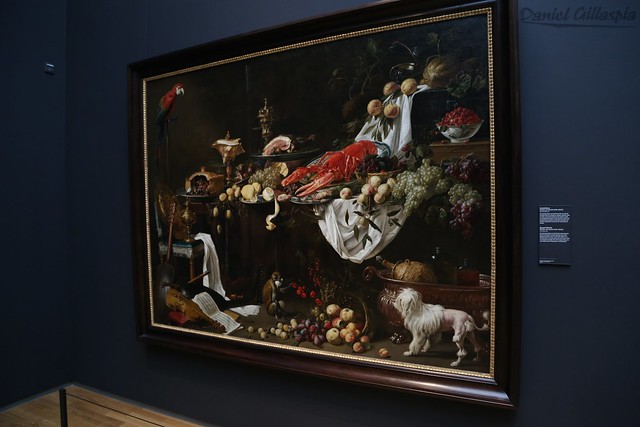
As a side note, I recommend that you download the free Rjkmusuem app from the app store.
I put it on my iPhone and actually listened to it on the train the morning I left for Amsterdam so I had a pretty good idea about what was going on in some of the paintings and other works of art. The app is a great tool not only for the audio commentary but also for helping you get around the museum and search for specific works.
Dutch culture on display in miniature form
In addition to the paintings, there are several exhibits worth noting that give great insight into what Dutch culture was like over the past few centuries. I think my favorite thing to see was the model of the Dutch ship William Rex.
It’s an intricate work and gives you a great look at how Dutch war ships looked in the 17th Century. You can see the extreme attention to detail that went into building this model ship that interestingly enough was actually built at a shipyard where other war ships were being built.
There are also a number of other war-time objects like a canon, some giant clunky firearms and many others.
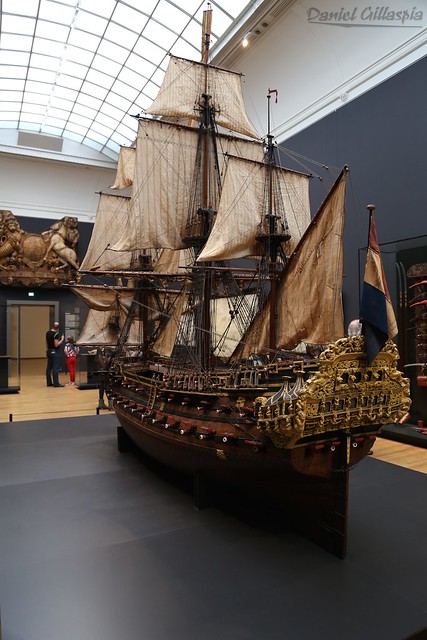
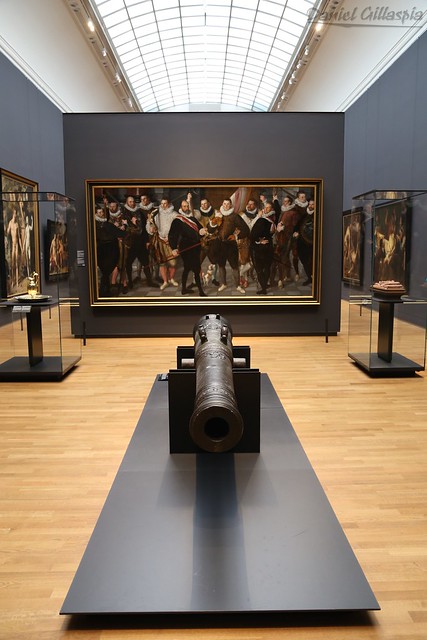
The museum also has a large display of Dutch furniture throughout the galleries.
Many of these desks and cabinets are pretty exceptional with intricate carvings but what I found most interesting were the doll houses.
This one called the Dolls’ House of Petronella Oortman exhibits what an affluent house back in the 17th century looked like. The rooms and all of the furniture inside of the houses are exactly proportional and if you just looked quickly at some of the photos of the rooms you’d think you were seeing a life-size display. Definitely check that out.
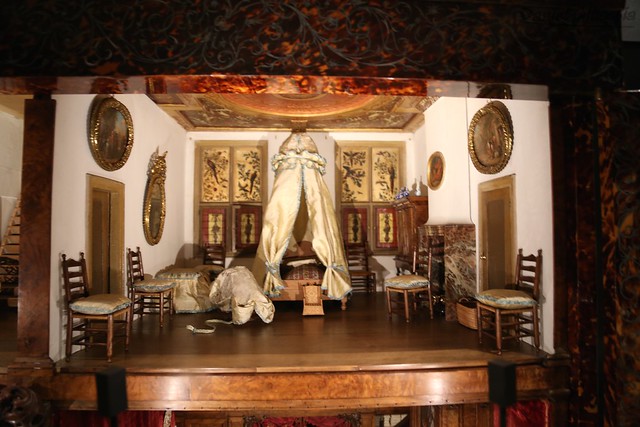
Delftware
The famed delftware was interesting and some of the objects, such as the violin and the flower pyramids were pretty cool.
Before coming to Amsterdam I knew of delftware ceramics but never realized how rooted it was in Dutch culture. There’s a variety of ceramics, glass, and other decor inside the museum and if you are interested in such things you’ll have plenty to see.
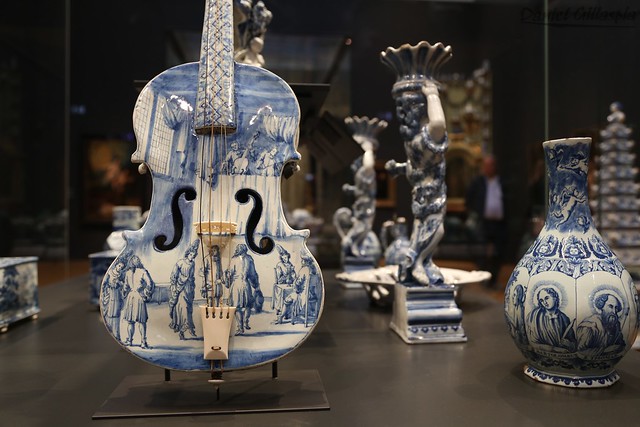
The bibliotheek (library)
The library in the museum is pretty stunning and I felt as if I was in a movie when I walked in.
And it’s not just there for show; it’s an actual art history library with the biggest collection in The Netherlands. You’re not allowed to talk in the library so make sure you’re aware of that upon entering because it’s pretty much a vacuum of silence in there.
We first entered the library from the third floor.
I didn’t see any “no photography” signs and several others were taking photos as well so I went ahead and got a few shots. Later, we entered the library on the first floor and there was a no photography sign.
Perhaps they just don’t allow photography on the first floor where others would be distracted at the reading desks?
Nonetheless, here’s a shot of it.
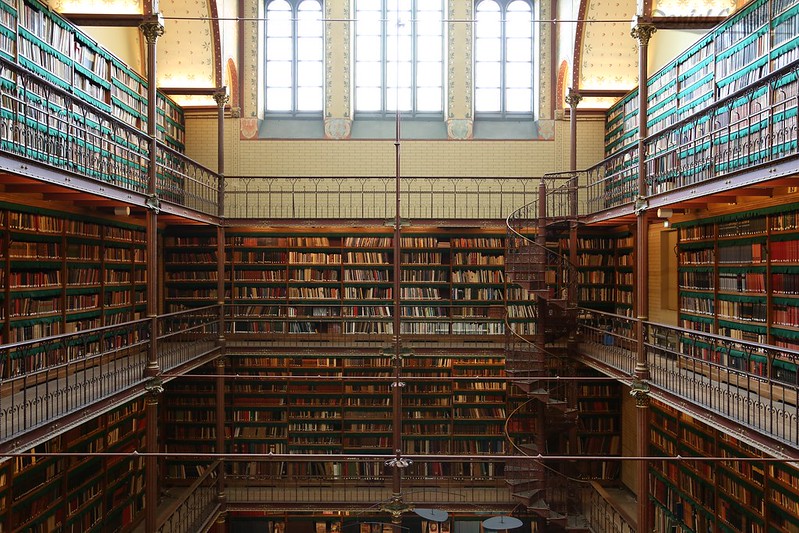
Van Gogh
There’s only one work of Van Gogh at the museum but you can’t really expect there to be much considering that the Van Gogh museum is literally next door.
Van Gogh painted a lot of self-portraits and I’m not sure if there was anything special in particular about this one, though I do think it’s a great painting.
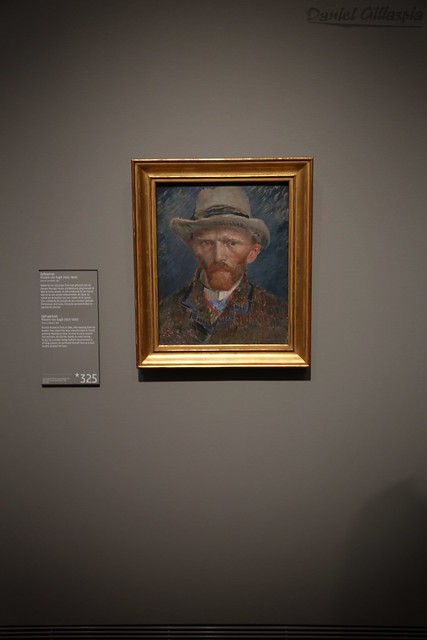
It was actually my first time to see a Van Gogh painting in real life so I got pretty excited even to only see a small taste of his work.
I originally had intended on visiting the Van Gogh Museum in Amsterdam as well but they were wrapping up some renovations and I decided that I’d rather wait for those renovations to conclude so that there wouldn’t be any missing pieces of art when I finally visited.
Rijksmuseum Tickets
I highly recommend that you purchase your Rijksmuseum tickets online to make your life easier. Also, you might want to consider skip the line tickets if you really want to make your visit as smooth as possible.
Skip the line tickets
You can purchase skip-the-line tickets here.
Standard tickets
- Adults: € 17.50
- Children aged 18 and under, Museumkaart holders, I Amsterdam City Card, members of ICOM, ICOMOS, the Rembrandt Association (Vereniging Rembrandt), KOG, Stadspas, Vrienden van de Aziatische Kunst, Vrienden van het Rijksmuseum, BankGiro Lottery VIP-KAART: free admission
- Holders of CJP or EYCA: 50% reduction on regular ticket price
Package tours and tickets
Consider lumping in your museum tickets with other attractions in Amsterdam.
Canal cruise tours
- You can combine your Rijksmuseum experience with a canal cruise (highly recommended way to see Amsterdam).
Hop-on Hop-off Bus & Rijksmuseum
Rijksmuseum Hours
- The museum is open : 9:00 to 17:00 daily, all days of the year: so the museum is also open on Christmas day, Boxing day and New Year’s day
- The Rijksmuseum’s ticket desk closes at 16:30
- The Rijksmuseum Gardens, Rijks Shop and Café are also open to visitors without a ticket from 9:00 to 18:00.
Hotels near the Rijksmuseum
Here’s a list of hotels near the Rijksmuseum you might be interested in checking out.
- Van der Valk Hotel Sassenheim-Leiden
- Van der Valk Hotel Hoorn
- Bilderberg Hotel Jan Luyken
- Max Brown Hotel Museum Square
- Amsterdam Marriott Hotel
You can search for hotels near the Rijksmuseum here.
A perfect size
I think that the size of the museum is great. It’s just large enough that there is plenty to see but not too big so that you’re overwhelmed with options. I stuck with my approach of focusing my time on about half of the museum so as to see that half more in depth.
Because of that I was not able to see much of the different exhibits in the museum, such as the Asian Pavilion and some of the special collections. If I could go back I would have designated a full three hours instead of two so that I could have seen more.
Overall impressions
Overall, I have to say that this was one of my favorite museums that I’ve visited.
Recently I’ve been on a bit of a museum kick and while I had highly anticipated my visit to see this one, I had no idea how impressive it was going to be. If you’re a fan of some of the greats, such as Rembrandt and other Dutch artists and if you’re interested in Dutch history then this is a must-see destination in Amsterdam.
Daniel Gillaspia is the Founder of UponArriving.com and the credit card app, WalletFlo. He is a former attorney turned travel expert covering destinations along with TSA, airline, and hotel policies. Since 2014, his content has been featured in publications such as National Geographic, Smithsonian Magazine, and CNBC. Read my bio.

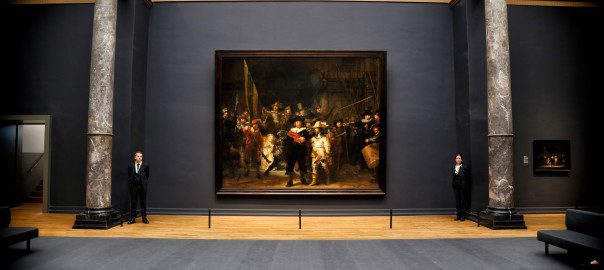
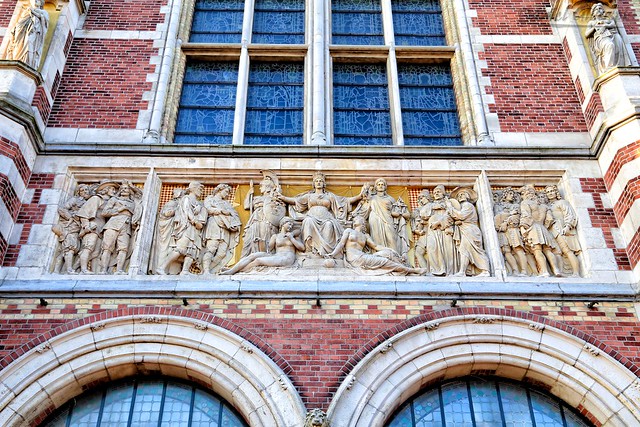
Wow, beautiful! I have been to Amsterdam 20 years ago, but wasn’t that much interested in art. But today I would not want to miss it. At least after I read your post! Thank you!
Thanks, that’s great. I wasn’t always so keen on art museums but after spending some time in some great museums over the past few months I’ve really started to see what they’re all about. It’s fantastic!
I totally agree! 🙂